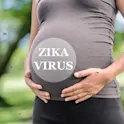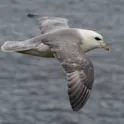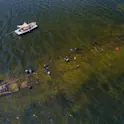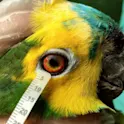1,071 news posts

Health
01 Sep 2020
Unravelling mother to baby transmission of Zika virus
How is zika virus transmitted from mother to baby? Frontiers in Immunology

Life sciences
26 Aug 2020
Bacteria could survive the travel from Earth to Mars, and vice versa, when forming aggregates
Deinococcus bacteria can survive in outer space for years: Frontiers in Microbiology

Environment
20 Aug 2020
Ancient gene family protects algae from salt and cold in an Antarctic lake
Glycerol protects algae in Antarctica from extreme conditions: Frontiers in Plant Science

Environment
19 Aug 2020
Plastic debris releases potentially harmful chemicals into seabird stomach fluid
Plastic waste is toxic for seabirds: Frontiers in Environmental Science

Life sciences
19 Aug 2020
Microbial ecology yields new insights for future shipwreck conservation
Shipwreck habors a rich spatially structured microbial community: Frontiers in Microbiology

Climate action
17 Aug 2020
Effects of nutrient pollution in marine ecosystems are compounded by human activity
Climate change worsens effect of eutrophication on coastal ecosystems: Frontiers in Marine Science

Health
13 Aug 2020
Bird and reptile tears aren’t so different from human tears
Reptile and bird tears are remarkably similar to human tears: Frontiers in Veterinary Science

Health
11 Aug 2020
Researchers show mathematically how to best reopen your business after lockdown
How should you reopen your business after Covid19 lockdown? Frontiers in Applied Mathematics and Statistics

Earth science
06 Aug 2020
Citizen scientists help geologists to identify earthquakes and tectonic tremors
Citizen scientists help earth scientists to identify seismic events: Frontiers in Earth Science

Environment
05 Aug 2020
Bird nests attract flying insects and parasites due to higher levels of carbon dioxide
By Nora Belblidia, science writer Researchers in Spain have examined bird nests in order to understand how flying insects and parasites detect gases as a way to locate their hosts. The study found that nests that had higher concentrations of carbon dioxide attracted more biting midges, a type of insect that carries a common blood parasite that infects local birds. The findings have implications regarding how diseases spread, which will be affected as carbon levels rise due to climate change. Flying insects and parasites are often vectors for disease, but a mosquito needs to first find someone before they can bite them. In a recent study published in Frontiers in Ecology and Evolution, researchers examined bird nests in order to understand how insects and parasites detect gases such as carbon dioxide and methane as a way to locate their hosts. The researchers focused on blue tit bird nest boxes located in a deciduous forest in central Spain. They found that the nests contained more biting midges when concentrations of carbon dioxide were higher inside the nest compared to the forest air. “This is important because biting midges are the main vector of Haemoproteus, the most abundant blood parasite infecting birds […]

Environment
05 Aug 2020
Tracking humanity’s latest toxins in stranded whales and dolphins
High levels of anthropogenic toxins found in stranded cetaceans: Frontiers in Marine Science

Life sciences
04 Aug 2020
Grooming behavior between dairy cows reveals complex social network
Social behavior of cows: Frontiers in Veterinary Science

Health
04 Aug 2020
Penis microbiota predicts if a man’s female partner will develop bacterial vaginosis
Penis microbiota important for development of bacterial vaginosis: Frontiers in Cellular and Infection Microbiology

Climate action
31 Jul 2020
Global significance of boreal forest and Indigenous-led conservation within it
Indigenous people take lead on conservation of boreal forests: Frontiers in Forests and Global Change

Featured news
27 Jul 2020
Studying COVID-19’s envelope protein
By Carolyn E. Unck | KAUST Discovery A likeness between genes of the SARS and COVID-19 viruses could inform research into potential treatments Understanding any similarities between SARS and COVID-19 inflammation could help in a clinical setting. A protein in the viruses causing COVID-19 and SARS is almost identical. Researchers propose testing if targeting COVID-19 with FDA-approved drugs, already tested in mice infected with SARS, could improve the outcomes for COVID-19 patients experiencing severe respiratory symptoms. The finding was a collaborative effort from teams at KAUST following a comparison of Betacoronavirus genomes. “We have long-standing expertise in analyzing genomic data at KAUST’s Computational Bioscience Research Center,” says molecular biologist, Takashi Gojobori. Gojobori, Carlos M. Duarte and a team of scientists compared the genomes of 24 Betacoronaviruses, including four SARS-CoV-2 viruses, which causes COVID-19. Two of the four were sequenced in the United States, while the other two were sequenced in China. “SARS-CoV-2 appears to have recently evolved from other related Betacoronaviruses, such as the ones causing SARS and Middle East respiratory syndrome (MERS),” explains Intikhab Alam, first author of the study. “We wanted to understand the genetic make up of SARS-CoV-2. Seeing what has changed might help find ways to detect the virus and understand its […]